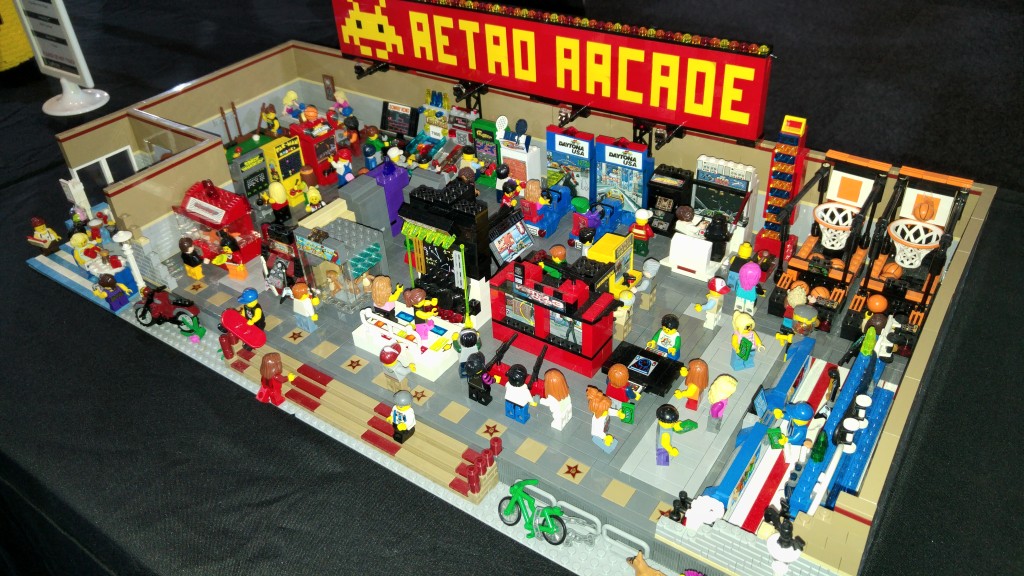Starting this Friday, I’ll be away until late November. To keep the site ticking over, I’ve scheduled several posts from the archives. Enjoy Fallout 4 — I won’t be back until after its release — and I’ll see you all in a few weeks!
Month: October 2015
What I’ve been reading
by Christian Cameron (historical fiction)
Entertaining and immersive – this is sword-and-sandals fiction the way it should be. The first two books in this six-book series, Tyrant and Storm of Arrows, follow an Athenian cavalry officer who journeys across the Eurasian steppe. The third book, Funeral Games, passes the torch to a new generation: exiled twins flung into the wars of the Diadochi.
In terms of quality, Funeral Games is decent to good, a solidly executed adventure story in an original setting, with elements we’ve seen before. But the first two are something special, a vivid epic that blends prophecy, military campaigns, and the cultural intersection between Greeks and Scythians, beneath the looming shadow of Alexander the Great. Highly recommended for period/genre fans, and players of Total War: Rome 2.
Armored Champion: The Top Tanks of World War II, by Steven Zaloga (non-fiction)
A highly readable book, covering tanks from inter-war designs to the Pershings and Comets of 1945. For me, it stands out due to: (1) its plethora of period photos; and (2) its emphasis on practicalities. Until reading this book, I never appreciated the importance of vehicle reliability; consider this comment from a British officer:
“It is evident that the commander of a unit equipped with Shermans can be confident of taking 99% of his tanks into battle, at any rate during the first 2,000 miles of their life. On the other hand, if he were equipped with Cromwells or Centaurs he would be in a continuous state of anxiety as to whether enough of his tanks would reach the battlefield to carry out the normal tasks expected of the unit.”
This is reinforced by the author’s “ranking” system. Each chapter includes a “Tanker’s Choice” for that year — the best vehicle on the battlefield, such as the Tiger in 1943. Each chapter also includes a “Commander’s Choice” — a cheap, reliable, “good enough” vehicle, such as the StuG III in 1943, the T-34/85 in 1944, or the M4A3E8 Sherman with HVAP ammo in 1945. I don’t think the popular imagination makes this distinction enough.
Recommended for subject matter fans.
Nobunaga’s Ambition: Strong First Impressions
In Nobunaga’s Ambition: Sphere of Influence, opportunity comes in many forms.
When my Tokugawa clan was small and insignificant, sandwiched between the rival Imagawa clan and our mutual ally Oda Nobunaga, opportunity came when the Imagawa let their alliance with Oda lapse. My armies marched against Imagawa — and true to the Oda/Tokugawa pact, Nobunaga himself came south to fight by my side.
When the Imagawa were defeated, and I found myself locked in bloody stalemate against the much larger Hojo clan for 15 years, my hopes turned to an alliance with a third power — the Takeda. When scripted historical events derailed the Takeda alliance — not once but twice — my first reaction was frustration. My second reaction was to think outside the box. The Oda were pressing the Takeda further away. The Hojo were quiescent. Why not bury the hatchet with Hojo and descend on the distracted Takeda?
Messengers went out. I gifted the Hojo with a precious tea set, reversing their opinion from “hostile” to “friendly”. The Tokugawa armies crossed the border into Takeda territory, seized their first castle…
… and another event popped up. Oda Nobunaga, my faithful ally from the start of the game, was dead, murdered by a treacherous vassal. The Oda domain – the huge blob that both anchored my northern flank, and blocked my expansion – dissolved, its settlements going to Nobunaga’s kinsmen and generals.
This is the situation a couple of years before Nobunaga’s death – I (Tokugawa) am the yellow-on-green faction towards the south of the map. Oda is red-on-white:
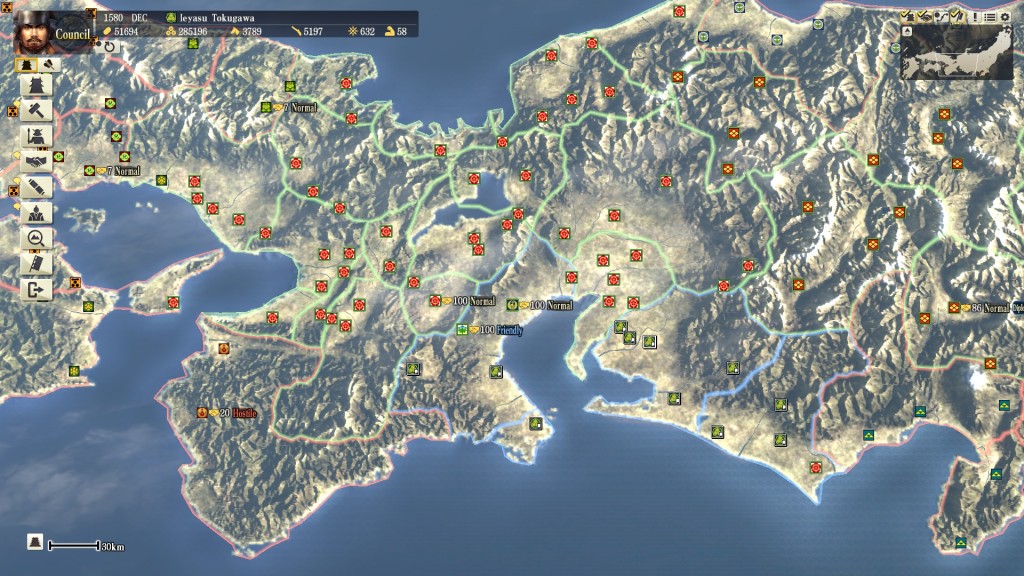 And this is the situation immediately after Nobunaga’s death:
And this is the situation immediately after Nobunaga’s death:
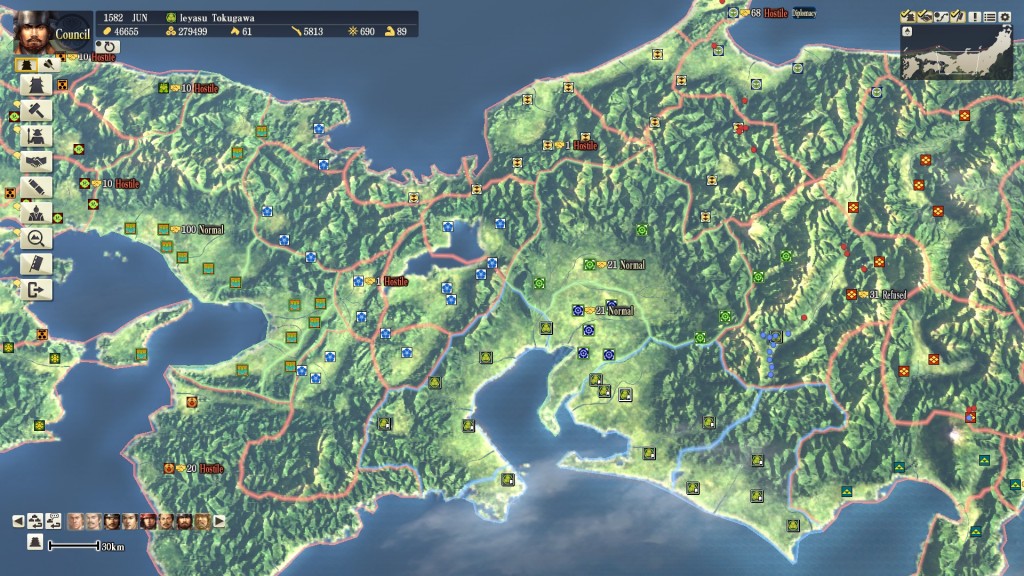 The game has gone from “deadlock” to “wide open”. Where I had been on the verge of restarting, now I see — opportunity.
The game has gone from “deadlock” to “wide open”. Where I had been on the verge of restarting, now I see — opportunity.
After spending the weekend with Nobunaga’s Ambition, my impressions are positive. I’d say it’s a very promising grand strategy game, combining solid execution, interesting mechanics, and a great aesthetic. So far, worth what I paid at launch! My main question is how well the mechanics will scale to large empires, the traditional 4X/GSG late game problem – my own empire is quite modest.
Below, I have a few more thoughts:
EB Expo 2015: Lego Steals the Show
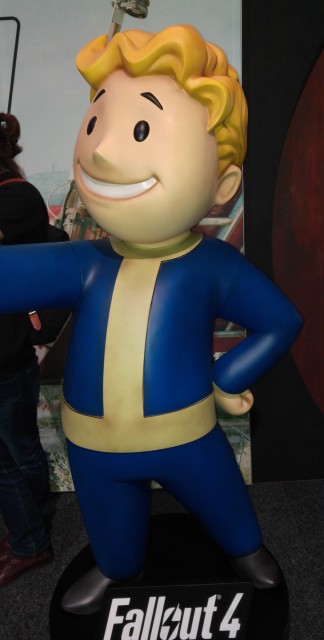 The EB Expo is an annual gaming event held at Sydney Olympic Park, traditionally featuring a mix of AAA games and local indies. For me, that makes it a great opportunity to venture beyond my traditional stomping ground, PC strategy games.
The EB Expo is an annual gaming event held at Sydney Olympic Park, traditionally featuring a mix of AAA games and local indies. For me, that makes it a great opportunity to venture beyond my traditional stomping ground, PC strategy games.
This year’s event appeared far more focused on the major brands. Sony, Nintendo, and Microsoft were all there, along with publishers such as EA, Ubisoft and Warner Brothers. Compared to previous years, there were fewer indies present — a bit of a disappointment, as chatting to each year’s indies is one of my favourite things about the show.
This year’s highlight was a Lego exhibition, organised by the same people behind Sydney Bricks (the Sydney Lego User Group). Seriously, check this out – it’s a retro arcade constructed out of Lego, complete with a little diner:
Crisis of the Confederation Q&A, with Gregory Hayes
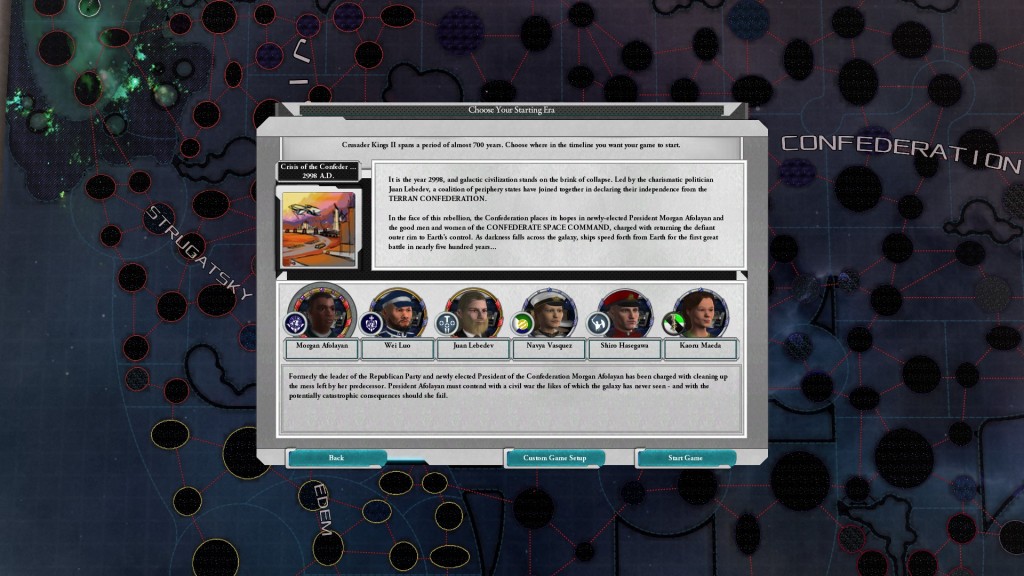 I am pleased to present an interview with Gregory “Galle” Hayes, project lead for Crisis of the Confederation – the “Crusader Kings II in space” mod I recently covered. Below, we discuss COTC‘s inspirations, the interplay between game mechanics and a space-feudal theme, where new players should begin, and more. Enjoy!
I am pleased to present an interview with Gregory “Galle” Hayes, project lead for Crisis of the Confederation – the “Crusader Kings II in space” mod I recently covered. Below, we discuss COTC‘s inspirations, the interplay between game mechanics and a space-feudal theme, where new players should begin, and more. Enjoy!
Development of the mod
Peter Sahui: Hello, and welcome to the site!
Crisis of the Confederation is one of the most interesting mods I’ve encountered, a homage to science fiction classics such as Dune and Foundation. What made you decide to translate those influences into a total conversion for Crusader Kings II?
Gregory Hayes: I happen to like applying game mechanics to new story concepts in general, and I’m a firm believer that everything is better in space, but COTC specifically actually had its origins in a game mechanic idea that I was never able to implement. Way back when I was working on A Game of Thrones, I was struck by the idea of using the Investiture mechanics to represent martial law versus civilian law. That created the need for a setting in which the spread of martial law made sense, which inspired the civil war backstory, which in turn led to me to think back to the great science-fiction cliche of the rebellious space colonies.
Another factor that probably influenced my decision was that I was replaying Emperor of the Fading Suns at the time. EotFS is a lot like CK1 – a broken mess of a game that is nevertheless fun because of how great its central ideas are. COTC isn’t really that much like EotFS in gameplay, but the desire for a good space feudalism game was definitely a big influence.
